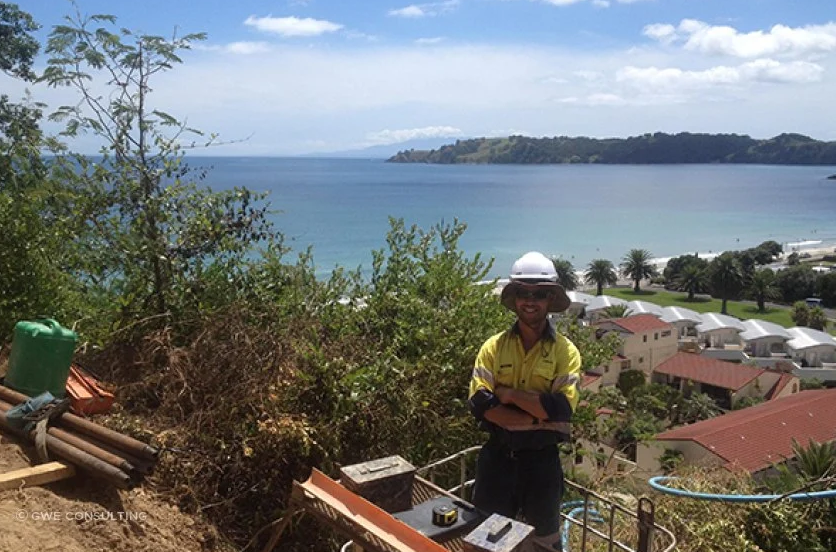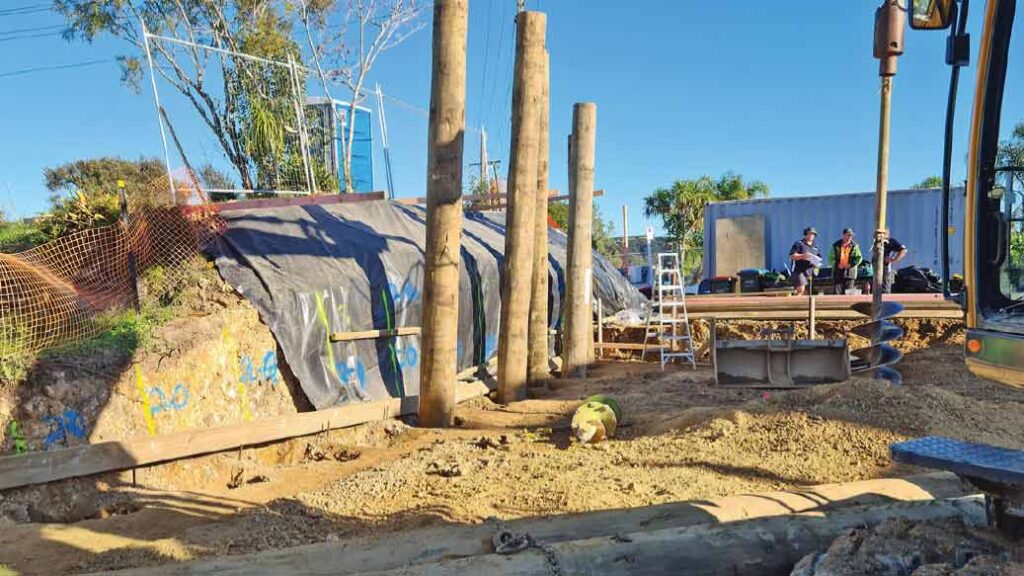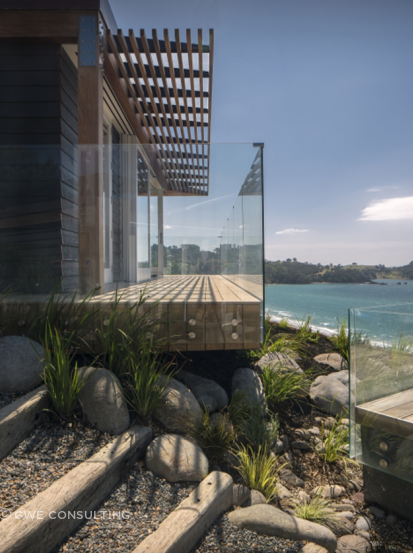Using engineering nous to tame Aotearoa’s shifting lands.
Three years ago a group of geologists gained global notoriety when they, successfully, argued for the recognition of the Zealandia continent—4,920,000km2 of mostly submerged continental crust—that broke away from the Gondwana supercontinent some 80 million years ago.
What makes this significant, is that just about dead centre in all that submerged continental crust is a 267,988km2 landmass known as Aotearoa New Zealand—an island nation with an interesting geological history including shifting tectonic plates, active seismic fault lines and a raft of volcanic fields.
All of that ‘geology’ has given New Zealand a unique topography that often requires specialist engineering knowledge when it comes to developing land for residential or commercial purposes, says Gareth Williams, Director of GWE Consulting Engineers.

“GWE Consulting Engineers’ (GWE) team of experienced geotechnical engineers specialise in the investigation, interpretation and analysis of geological processes, risks and ground conditions for land development projects.
“Our services include planning and overview site investigations, option studies for foundations, retaining walls and piles, slope stability analysis, pavement design and geotechnical hazard studies.”
For nearly 10 years, the GWE team has been providing those services on projects stretching from Kaitaia to Taupo, throughout the Coromandel and across the country, working closely with developers, planners and architects.
“A lot of what we do in the residential sphere is around coastal areas where you have variable ground conditions and often steeply sloping blocks. We carry out detailed site investigations and through engineering design work out achievable and cost-effective solutions for creating stable building platforms, which may involve one or more of the following: ground remediation, soil retention and retaining structures such as barrier pile or palisade walls.
“In the commercial realm we provide ‘engineering to add value’ services mostly designed to enable change of use status or for increasing density of developments, which is why it’s important for us to be included right at the start of the development process, as it’s not uncommon for building timetables and budgets to be blown out after the fact if a lot of unidentified remedial works need to be undertaken later.”

Looking at the land from the ground down
GWE currently has 10 geotechnical engineers on staff who, through a combination of techniques including hand augering, machine drilling and cone penetration testing, collect data to develop accurate ground models to analyse for the possibility of slope instability, settlement or liquefaction. We use the model outputs to design appropriate solutions to mitigate or eliminate that risk, says Gareth.
“A typical analysis phase lasts anywhere from two to four weeks and once a solution has been recommended we will carry out periodic site visits during construction milestones to ensure that the guidelines we have stipulated are being adhered to.
“Given New Zealand’s unique seismic and volcanic aspect, it’s not surprising that we’re adopting world’s best practices around earthquake-proof structures and as engineers, we’re required to do more and more within legislation to effectively manage other peoples’ risk so they can rest assured that all works carried out by us is reviewed and signed off by a nominated job manager, who may be in-house or a third-party representative.”
“One of our current projects is a luxury home on Waiheke Island where the site has a 35-degree slope. While the solution we’ve provided means the build is achievable, there will be a few points along the way that will test the process, but ultimately, that is what we do.
“Often, we see ourselves as the Grim Reaper—having to tell our clients that their project is not the best economic solution and that there are better methods to achieve the same result. That’s why, particularly in the residential sector, it’s imperative for us to be engaged at the very beginning of a project, so that the architect and client go into it with their eyes open. It’s not often that we can’t come up with a workable solution, however, it can have a major effect on budget.”

Discrete solutions for wastewater, stormwater and potable water
Another of GWE’s services centres on what it describes as ‘three waters’, particularly in the rural and lifestyle markets.
“Rural greenfield sites are very rarely set up to deal with issues around wastewater treatment and disposal, stormwater retention and run-off mitigation and supply of potable water,” says Gareth.
“GWE works in partnership with New Zealand’s leading drinking water and wastewater system suppliers to offer affordable solutions specific to our clients’ needs and site conditions including: primary, secondary, tertiary or alternative treatment systems, along with a range of onsite disposal solutions. Additionally, we can advise clients on the requirements for resource consent and provide all technical and planning reports.”
GWE can also carry out investigations around historical land usage of former horticultural land to assess any contamination issues.